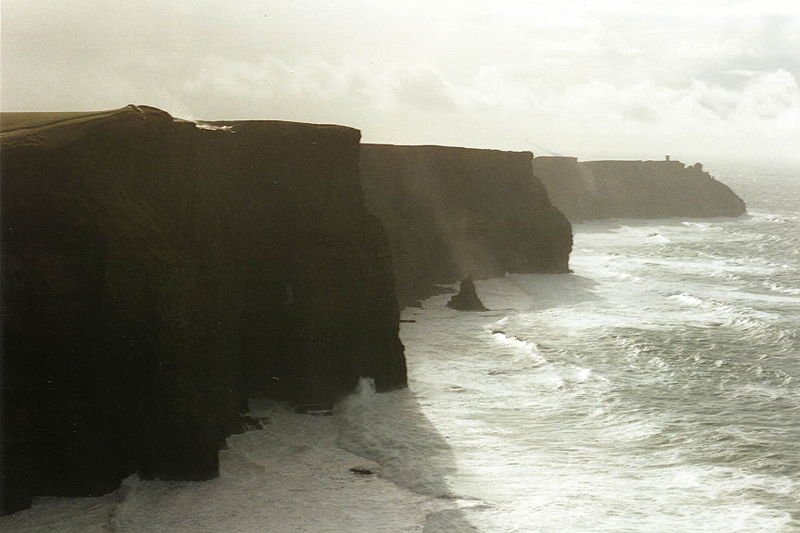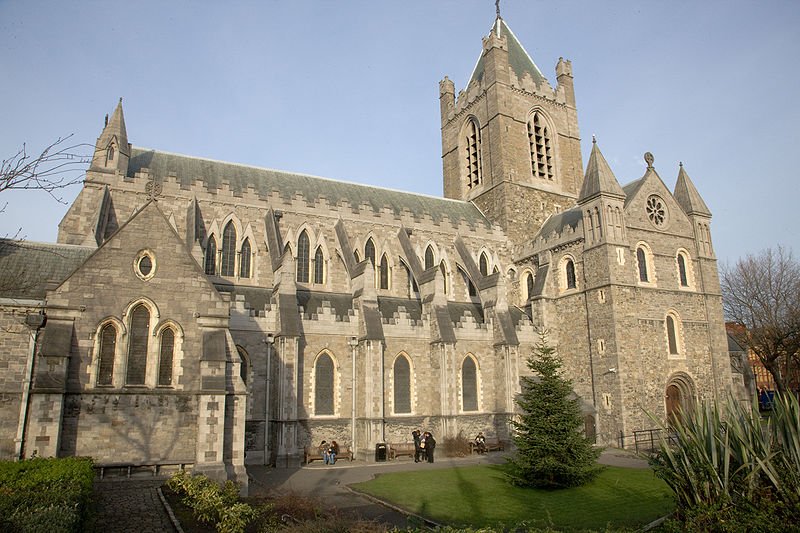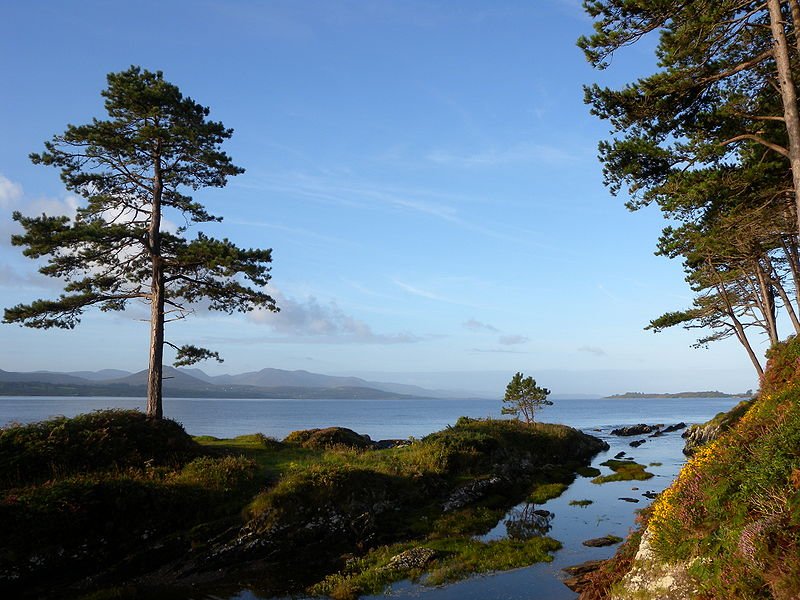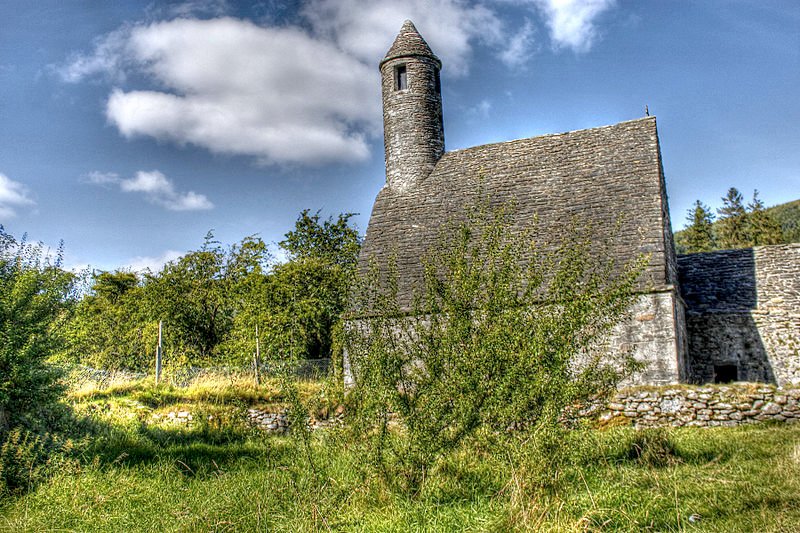 Cliff of Moher, Ireland
Cliff of Moher, IrelandSource: https://commons.wikimedia.org/wiki/File:Cliff_of_Moher.jpg
Author: Matpib

The Republic of Ireland is a country in northwestern Europe. It shares the island of Ireland with Northern Ireland, which is part of the United Kingdom. The Republic of Ireland, known in Irish as Poblacht na hÉireann, was initially known as the Irish Free State when it was established in 1922. It took on the name Ireland in 1937, and changed it to the present name of Republic of Ireland in 1949, after severing formal links with the United Kingdom and leaving the British Commonwealth.
During British rule, Ireland was one of the poorest countries in Western Europe. The Act of Union placed Ireland as part of the United Kingdom of Great Britain and Ireland. The country suffered greatly through the 19th century. Between 1845 and 1849, the Great Famine shaved off 30% of its 8 million population.
Today, Ireland has become the 31st biggest economy with the fifth highest GDP (ppp) per capita in the world, according to the World Bank report of 2008.
Fast Facts about Ireland
- Official Name: Republic of Ireland
- Capital: Dublin (506,000)
- Population of Ireland: 4,016,000
- Languages: English, Irish Gaelic
- Currency: Euro
- Religions: Roman Catholic (88%), others
- Size: 70,280 sq km (27,135 sq miles)
Principal Cities of Ireland
- Dublin
The capital as well as largest city in Ireland. A major tourist destination, it is the fourth most visited European capital. - Cork
Second largest city in the Republic of Ireland. - Galway
Third largest and one of the fastest growing cities in Ireland, on the River Corrib. - Kilkenny
Medieval town also known as Marble City. - Killarney
Popular tourist town in the southwest of Ireland. - Letterkenny
Town in County Donegal, on the River Swilly. - Limerick
Fourth largest city in the Republic of Ireland, located on the River Shannon. - Tralee
Largest town in County Kerry, renowned as the venue of the Rose of Tralee International Festival. - Waterford
Oldest city in Ireland.
 Christchurch Cathedral, Dublin
Christchurch Cathedral, DublinSource: https://commons.wikimedia.org/wiki/File:Christchurch_Cathedral_-_Dublin.jpg
Author: William Murphy

 Ring of Kerry, Ireland
Ring of Kerry, IrelandSource: https://commons.wikimedia.org/wiki/File:Ring_of_Kerry-Scenic_view_southwest.jpg
Author: Dl Florian Fuchs
Preparing Money for Ireland
The currency used in Ireland is the Euro (EUR).Planning your visit to Ireland
By PlaneThere are four international airports in Ireland, namely the Dublin International Airport (DUB), Shannon International Airport (SNN), Cork International Airport (ORK) and Knock International Airport (NOC). The biggest is the Dublin International Airport, which is also the 8th biggest in Europe. It receives the most number of flights from major cities in Europe, North America and the Middle East.
By Train
The Enterprise is a train service jointly run by Irish Rail (www.irishrail.ie) and Northern Ireland Railways. It runs from Belfast Central railway station to Dublin Connolly railway station.
By Ferry
There are ferry services linking Ireland with Great Britain and France. The Norfolkline (www.norfolkline.com/), Irish Sea Express and Steam Packet Sea Cat are some of the ferry operators plying the route between Liverpool and Dublin. Irish Ferries (www.irishferries.com) connect Holyhead in North Wales with Dublin, and Pembroke in South Wales with Rosslare. Ferryonline (www.ferryonline.co.uk) offers ferry services between the United Kingdom and Ireland.
 A monastery in Glendalough, Ireland
A monastery in Glendalough, IrelandSource: https://commons.wikimedia.org/wiki/File:Monastary1_(8061789794).jpg
Author: psyberartist

Planning your travel within Ireland
To properly explore Ireland, the best way to go about it is by car. Car rental companies can be found at all the major airports.Irish Rail operates an extensive network of rail lines across the country, radiating out of Dublin.
World Heritage Sites in Ireland
Ireland ratified the World Heritage Convention on 16 September, 1991. As of August 2010, it has two World Heritage Sites, both in the cultural category. Ireland also has another y sites on the World Heritage Tentative List.Sites in Ireland on the World Heritage Tentative List
- The Burren (2010)
- The Historic City of Dublin (2010)
- The Céide Fields and North West Mayo Boglands (2010)
- Western Stone Forts (2010)
- The Monastic City of Clonmacnoise and its Cultural Landscape (2010)
- Early Medieval Monastic Sites (2010)
- The Royal Sites of Ireland: Cashel, Dún Ailinne, Hill of Uisneach, Rathcroghan Complex, and Tara Complex (2010)
Places of Interest in Ireland
- Cliffs of Moher
Picturesque cliffs rising out of the Atlantic Ocean. - The Burren
Karst landscape in northwest County Clare. - Brú Na Bóinne
One of the most important prehistoric megalithic sites in Europe. - Aran Islands
Islands on the west coast of Ireland. - Connemara
District with picturesque landscape. - Ring of Kerry
Tourist trail with many scenic points. - Skellig Michael
Rocky island in the Atlantic Ocean with ancient Irish monasteries. - Dingle peninsula
The westernmost tip of Ireland, with fantastic seascapes. - Glendalough
Glacial valley with Early Medieval monastic settlement.
 Latest updates on Penang Travel Tips
Latest updates on Penang Travel Tips

Copyright © 2003-2025 Timothy Tye. All Rights Reserved.

 Go Back
Go Back